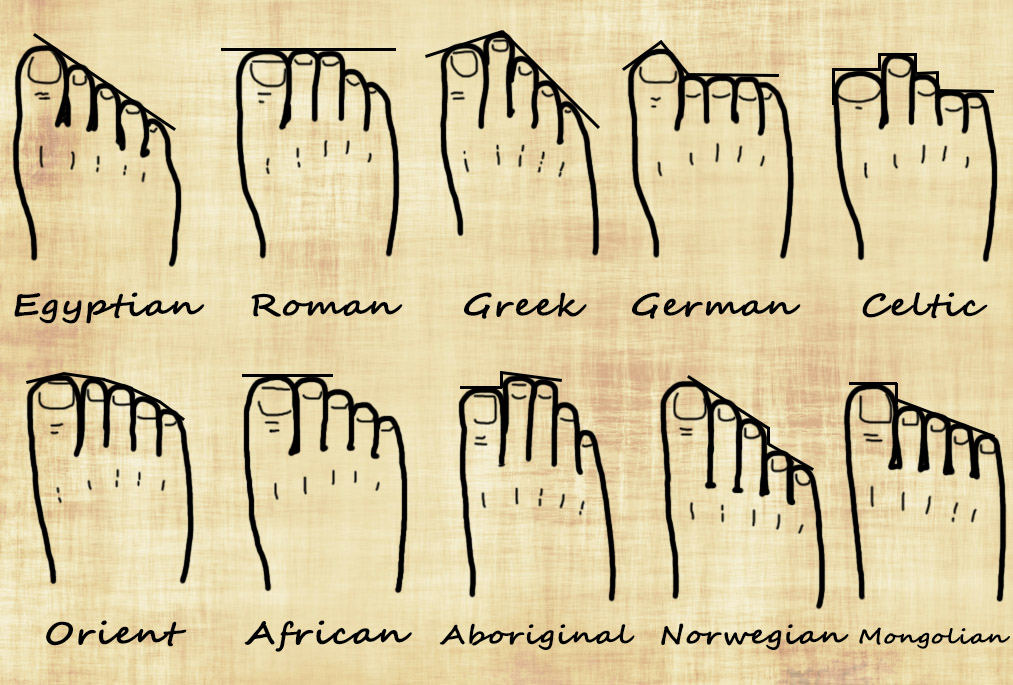Researching your genealogy is easier than ever. With online records and digitized documents, many people can build their family tree without leaving home. But long before websites and DNA kits, some turned to more unusual methods—like the shape of their feet.
You may have heard of this quirky idea: that your foot shape can reveal your ancestry. While not scientifically supported, it remains a curious tradition. Let’s explore the theory of foot and toe ancestry and what it might say about your roots.
What Is Foot and Toe Ancestry?
“Foot and toe ancestry” suggests that the outline of your feet and the length of your toes can indicate where your ancestors came from. The theory identifies five basic foot shapes:
- Celtic
- Greek
- Egyptian
- Germanic
- Roman
Each type has a distinctive design and specific toe lengths. The concept isn’t supported by science, but it continues to spark curiosity among genealogists and hobbyists.
What Is the Celtic Foot?
The Celtic foot is the most complex of the five. It features a large foot, a short big toe, and a very long second toe. The other toes taper in size from there. This foot shape blends traits from the Greek and Germanic types, especially the second toe, which is often the longest in both.

If your feet match this description, you might wonder about Celtic roots in your family tree. It can be a fun reason to explore a new branch—even if the foot theory isn’t reliable.
What Other Foot Shapes Say (Maybe)
- Egyptian foot: The big toe is the longest, with each toe descending in size.
- Greek foot: The second toe is the longest.
- Roman foot: The first three toes are about the same length.
- Germanic foot: The big toe is dominant, and the others are shorter in a straight line.
These categories are based more on artistic ideals than biology. Many sculptures from ancient Greece, for example, show Greek feet—even on statues of liberty and justice.
Are These Foot Shapes Based on Art?
Yes. The classical foot types—Greek, Roman, and Egyptian—were often copied in art. These styles became beauty standards in the 1800s when this foot ancestry theory gained popularity.
Artists depicted their ideal citizens using these foot shapes. So the theory likely reflects cultural preferences more than widespread biological traits.
Where Did These Classifications Come From?
In the 19th century, people developed the idea of “homogenous groups,” like the German people or the Egyptian people. However, these groups were far more diverse than the theory suggests.
Germany, for example, was once made up of kingdoms like Saxony and Prussia. The Romans grouped all these cultures together as “Germans,” not because they were the same but because they were seen as outsiders.
The same applied to ancient Egypt. While Egyptians had shared traditions, their society also included people from across Africa, the Middle East, and beyond. These foot-shape labels ignore that diversity.
Does Foot Shape Really Say Anything About Ancestry?
The short answer: not really. Scientific studies have looked at toe length across populations. For example, the second toe is commonly longer in many parts of the world—including places with no Greek ancestry. This suggests balance and walking efficiency might shape foot structure more than genetics.
Still, the theory has entertainment value. And it can be a good way to spark interest in family history—especially for kids.
Should You Use This in Your Research?
No serious genealogist uses foot shape to build a tree. But if you’ve hit a wall in your research, or you’re looking for a light-hearted way to engage family members, this can be a fun exercise. It might even lead you to look into a part of your heritage you hadn’t considered before.






